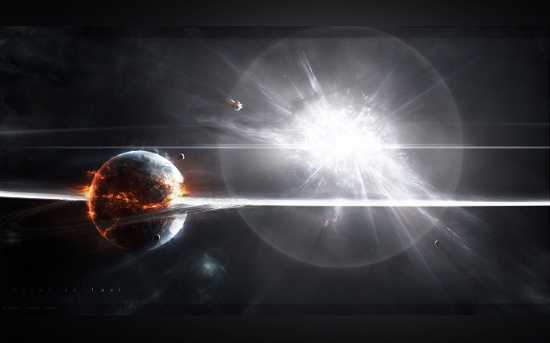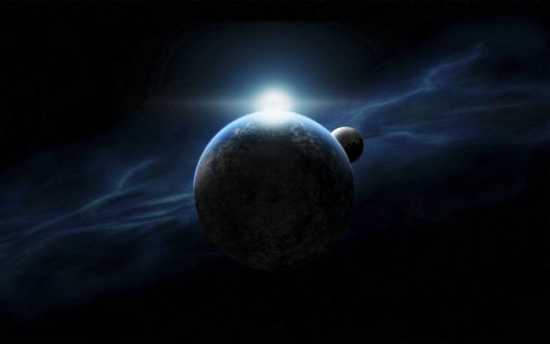 History
History  History
History  Pop Culture
Pop Culture 10 Cases of Grabbing Defeat from the Jaws of Victory
 History
History 10 Common Misconceptions About the Renaissance
 Weird Stuff
Weird Stuff 10 Crazy Things Resulting from Hidden Contract Provisions
 Facts
Facts 10 Unusual Facts About Calories
 Weird Stuff
Weird Stuff 10 Days of Humiliation When the Person Should Have Stayed in Bed
 Humans
Humans 10 Surprising Ways Game Theory Rules Your Daily Life
 Food
Food 10 Popular (and Weird) Ancient Foods
 Animals
Animals Ten Bizarre Creatures from Beneath the Waves
 Technology
Technology 10 Unexpected Things Scientists Made Using DNA
 History
History 10 Events That Unexpectedly Changed American Life
 Pop Culture
Pop Culture 10 Cases of Grabbing Defeat from the Jaws of Victory
 History
History 10 Common Misconceptions About the Renaissance
Who's Behind Listverse?

Jamie Frater
Head Editor
Jamie founded Listverse due to an insatiable desire to share fascinating, obscure, and bizarre facts. He has been a guest speaker on numerous national radio and television stations and is a five time published author.
More About Us Weird Stuff
Weird Stuff 10 Crazy Things Resulting from Hidden Contract Provisions
 Facts
Facts 10 Unusual Facts About Calories
 Weird Stuff
Weird Stuff 10 Days of Humiliation When the Person Should Have Stayed in Bed
 Humans
Humans 10 Surprising Ways Game Theory Rules Your Daily Life
 Food
Food 10 Popular (and Weird) Ancient Foods
 Animals
Animals Ten Bizarre Creatures from Beneath the Waves
 Technology
Technology 10 Unexpected Things Scientists Made Using DNA
Top 10 Interesting Questions About Aliens
That we’re not alone in the universe is something no one knows but most suspect – not only because it is highly probable that there is another advanced form of life somewhere out there, but also because it is a highly fascinating subject that does a beautiful job at spurring our imagination. However, in imagining what such form of life could look like or behave like, we readily make a number of anthropocentric assumptions (that is, we assume they are like us to an unnecessary degree), some of which we are not even aware of. Our common idea of what an extraterrestrial being should look like has been largely shaped by depictions in arts and entertainment that were, in one way or another, created to be relatable and convenient for storytelling purposes, while compromising verisimilitude. If we live in a multiverse, then practically any kind of being we could possibly conceive has existed or will exist at some point. But let’s pretend that humanity is on the verge of making first contact with a single species, a civilization that dwells on a planet close to ours. What can and what can we not assume about them? What do we have to wonder about them? Let us explore, in the spirit of speculation, a number of factors that merit some thought – and how they are related to both science fiction and real science.

It’s not just that we imagine them to be humanoid (standing on two legs, two limbs coming out of the sides of the upper torso, a head with a nose, a mouth, ears, and eyes); it’s that we imagine them to appear earthling-like at all. Even when we try to diverge most from the typical humanoid appearance that science fiction gives to extraterrestrials, we can’t help but envision them as sharing a general morphology with Earth’s fauna: reptiles, crustaceans, or, at best, insects – only of human size or slightly bigger. The rationale behind this is actually not as faulty as it may seem. If we build our imagined extraterrestrial from the ground up, we make anthropocentric assumptions about their morphology out of necessity. After all, we are the only intelligent species that we know of, and therefore the only instance that we can study of evolution reaching such a state. First, we assume that any intelligent species had to arise from some sort of biochemistry similar to ours. Then the resulting life form had to achieve a multicellular state, so as to develop a dedicated brain. It had to develop a skeleton of sorts to cope with gravity, and its body had to grow up to a minimum size such that its brain developed the level of cognition that we enjoy. It had to grow at least a pair of limbs to move around with and a pair to use tools. It also has to have a set of senses to interact with its world and a body big and strong enough to thrive in its ecosystem. In the end, it’s just simpler to not think outside the box.
That said, we’re basing all of this on the idea that their world is like ours – and that evolution took a very similar set of paths that resulted in similar biodiversity. But they don’t have to be the same size we are. For example, for all we know, there could be sapient extraterrestrials the size of a small building or the size of a freight train. They don’t have to have a head or limbs resembling what we’ve seen on this planet. They don’t even need to have a skin instead of, say, a cellulose wall or something made of an exotic compound. Even more exciting to contemplate are extraterrestrial life forms that don’t share our biochemistry at all. It is theorised, for example, that silicon-based beings would be of a crystalline structure and thrive in high-temperature places, though silicon biochemistry is not as flexible and apt for life as carbon’s is.

Whatever shape they have, extraterrestrials need some sort of energy source to live – that much we know, at least in our universe with our particular laws of physics. What could it be, then? Evolution is a powerful force, but I doubt there are beings with integrated cores prancing around fusing hydrogen atoms like it’s going out of fashion in the vicinity of our galaxy. Again, this variable powerfully hinges on their biochemistry, and the effects are many to be left without discussion. Given the availability of the elements that make up the compounds that make us up, it isn’t a stretch to think that there are aliens who have a diet similar in chemistry to ours. But whatever they specifically eat defines many of their characteristics and traits, ranging from their anatomy to their social structure to their economy to their attitudes toward other life forms. Do they see us as prey; as predators; as competition; as the intrusive dwellers of an earthy, delicious planet; as a waste of precious iron and other minerals in our bloodstream; or as nasty, smelly blobs of excrement? Conversely, are their diets something that makes them inherently disgusting and undesirable to us (say, ammonia-based beings)? Are they out in search of food or is their planet so plentiful and their hearts so altruistic that they are out to feed the starved (and their definition of “starved” so convenient that it includes us but doesn’t make us their inferior)?
Another interesting but less meaningful energy-related question is, of course, how they power their infrastructure and technology. Presumably, whatever they do to keep their ships afloat or their lights on is something we could apply to our own technology, if it is more efficient than our own energy-extraction processes and as long as it isn’t based on a resource that their planet has and ours doesn’t.

It has taken life approximately 3.5 billion years to get from our last universal ancestor (i.e., the most recent forebear of all organisms on Earth) to where we are today. Along the way, there have been natural disasters, giant dinosaurs, more natural disasters, early empires, religions, nations, navies, colonization, Theodore Roosevelt, world wars, and a cold war. Whatever we’re responsible for, we’re equal parts proud and ashamed of, but undoubtedly, it is a very interesting story to tell. What do they have to tell us, then? Did their evolution yield as diverse an array of life forms as ours did? If so, did their planet endure extinction events, perhaps involving other intelligent species? Did their civilization break up into different nations? If so, is their world still governed by different nations?
Again, the way they would approach us would be, in more than one way, defined by their history. A society unaccustomed to violence might be benevolent to a fault, almost naive, in their first interactions with another intelligent society. Then again, it could also be exceedingly cautious, aware that not all civilizations regard the concept of harmony with such devotion. A society that has become used to conflict, on the other hand, is likely to have developed both a more sophisticated diplomacy apparatus and a military – and the extent to which they rely on either is something we can only speculate about. Some, including Jared Diamond and Stephen Hawking, have speculated that, if we ever come into contact with a civilization that is superior to us and behaves more or less like us, then, judging by the outcome of the most significant encounters between two societies that’s occurred throughout human history, it is likely that the superior civilization would come to dominate us, perhaps through a combination of hard power (force or coercion) and soft power (non-intimidating persuasion).

It is our hope that any contact we make with extraterrestrial beings will have a mutually beneficial outcome – scientific cooperation, space exploration, the sharing of resources, and perhaps even a shared appreciation of some sort of common art. Needless to say, we have also contemplated a variety of negative outcomes involving their use of violence upon us. But just because they don’t use violence doesn’t mean they can’t possibly be subjugating us. We ourselves use plants and animals for our own self-preservation purposes, and while some of us make efforts to improve the way we treat animals, the fact remains that we condition their lives to our will, regardless of whether they are aware of it. Could it be that a more advanced civilization would want to use us in some way, whether we know it or not? Could it be that they, like us, have always expected to be contacted by a superior race, and so they are as unprepared and eager to be baffled as we are? As I suggested above, many scientists are of the opinion that going out of our way to make contact with aliens is not something humanity should do. Our first-contact aliens might be as wary of making contact with us as we are of them – and if history serves to indicate anything, they might be completely justified.

Unfortunately, the extent to which we can speculate about the capabilities of other intelligent beings is limited by our own intelligence. If they are smarter than us, we can conceive them to be more proficient in science and engineering. Just like a Neanderthal would probably imagine (if he even could imagine) more sophisticated beings to be much more formidable hunters and tool makers, while being unable to conceive art, diplomacy, metaphysics, or semantics the way we see them. What sort of concepts could a more developed intelligence conceive that we can’t even begin to comprehend, no matter how much our science and technology advance? What level of insight into the nature of life do they have?
Again, going back to the Neanderthal analogy, just imagine that we come into contact with a race that’s just as intellectually capable as the Neanderthal: they would understand their encounter with us very differently from the way we would understand it. They are limited by their brain and would not comprehend our efforts to communicate with them; meanwhile, we would be frustrated and disappointed, as our interaction with them would prove fruitless. Now imagine that we come into contact with a race that’s much, much smarter than us, such that their advantage over us is the same as ours is over the Neanderthal. Would they be frustrated by our inability to do and comprehend what they can do and comprehend? Or is there a minimum level of intelligence that we’ve already achieved, past which all forms of communication are possible? (The same way there is a minimum level of intelligence that dogs have achieved, past which they are as capable as we are of identifying their “loved ones.”)
The concept of cosmicism, developed by fiction writer H. P. Lovecraft, is more or less related to this issue, as it describes the inability of humanity to comprehend much greater forces that rule the universe, and proposed that the magnitude of these forces renders us insignificant in the grand scheme of things.

This is a rather common prompt for works of science fiction (a recent and notable example being the stellar video game series Mass Effect), but the underlying question is every bit as significant as it’s made out to be by works of fiction. We know – again, via science fiction – that there exists the risk of developing a form of artificial intelligence that may not act in humanity’s best interests, which could pose a threat to our existence. It may sound like an overblown prediction, but the importance of ensuring that development of AI be carried out responsibly is very real; in fact, there is an actual organization dedicated to just that, known as the Singularity Institute. Assuming that a rogue AI’s interests clash with those of every other life form, though, our concern should be whether any form of rogue AI emerges anywhere in our interplanetary vicinity.
Unfortunately, we do not have control over what civilizations that haven’t had contact with us do, and so there is a probability that someone somewhere, unbeknownst to us, is developing a form of artificial intelligence, if they haven’t already. The probability of this scenario is fairly low, and it’s even less probable that a species of such intelligence would not have a sense of precaution. Even then, it’s very, very unlikely that this could pose a threat to our existence. But it’s a question worth asking, and one that has produced some quality works of fiction.

Regardless of their level of intelligence, we cannot assume that aliens think the way we do. It’s not necessary to our construct of a hypothetical alien race that their memory functions the same way ours does, or that they have the same notion of self that we do, or that they communicate through spoken language, or that they think of space and time like we do. It would surprise you how much our cognitive processes can vary across cultures; think, for example, of the Piraha people in the Brazilian Amazon and the words of Carl Sagan, “the simplest thought, like the concept of the number one, is an elaborate logical underpinning.” When asked to count objects, the Piraha seem to have little understanding of numeracy, using only three words, more or less equivalent to – “roughly one,” “more than one,” and “many” – to refer to amounts. These are your fellow human beings, who are as physically evolved as you and I are and live in the same environment; now extrapolate this difference to the potential gap between how the aliens’ minds work and how ours do! Numeracy is not the only possible difference.
Equally intriguing is the idea that they may feel very different emotions from us. Many of our emotions are hypothesized to be the byproducts of evolution, and so the way we feel emotions has been shaped by our own, unique evolutionary history. It is quite possible, then, that whatever alien civilization we make first contact with does not understand the purpose of laughter, doesn’t feel spite, or isn’t scared or awed by the things that scare and awe us. Conversely, it is also possible that they feel emotions that we cannot even begin to comprehend. This would make interplanetary diplomacy less easy than we wish it were.

Whether (or where) there are extraterrestrial civilizations is only one of the very many things that we do not know about our universe. Presumably, some civilization out there already comprehends most, if not all (what we would call the “Theory of Everything”), physical phenomena to a much more sophisticated degree than we do, has been able to elucidate the nature of dark matter and dark energy, counts with a far grander cartographic database of the universe than we do, and knows much more about where in the universe there is life. Some of these civilizations might even understand how to use the topology of space-time to their advantage, a topic that has been thoroughly explored by our imagination. Their willingness to share this knowledge and technology with us would no doubt benefit us immensely, as well as them.
However, as stated above, it is possible that we are simply too limited in intelligence to comprehend the work and the understanding that the other civilization is capable of. However, it is obvious that humans have not stopped evolving, and there exists the possibility that from us will emerge a more intelligent species, or at least more intelligent humans, twenty thousand years from now or a million years from now.

Existential threats vary from local (say, a plague) to universal (the Big Rip), but no one is completely devoid of them. In fact, the grander in scale and the more beings they affect, the more inevitable they can potentially be. We can eradicate a disease or prevent nuclear holocaust, but we can’t prevent a gamma ray burst from firing straight at us or a supernova from wreaking havoc. Such undertakings seem impossible to us, but even they seem trivial compared to the ultimate extinction event: the universe’s eventual transition into a state unsuitable for life. This can happen 97 trillion years from now, when stars cease to fuse; 1034 years from now, when protons start to decay; 10100 years from now, when all that remains is photons; or any day now, if we are in a false-vacuum state. Presumably, any intelligent form of life would want to prolong its existence indefinitely, whether as it is or in some sort of elevated state. What steps might other civilizations take to ensure their continued existence, then?
Not too long ago, when the Big Crunch seemed like the most plausible end-of-the-universe scenario, a physicist named Frank Tipler proposed that the solution would be to create an infinitely powerful computer, which would harness all the energy created by the Big Crunch. With this energy, he argued, the computer could “bring back to life… all life that ever existed”. In the very last second of objective time (i.e., “physical” time), the computer could create an infinite amount of “subjective” time in which it could emulate all possible quantum states of the universe – including every life form that ever existed. The takeaway from this is that, as self-preserving life forms, we meet our awareness of the finitude of the universe with ideas to overcome it and make the existence of life infinite (if only subjectively so – but does that matter?).

Within our narrow (but, in all likelihood, accurate) idea of what kind of planets can sustain life and using our verdant technology, we have already discovered a few star systems with one or two planets that fulfill our criteria. The bad news is that there is a rather long stretch between being able to sustain life and being able to sustain advanced, intelligent civilizations, and there is little reason to believe that one of the rather few habitable planets that we’ve identified actually harbors intelligent life. The good news is that we’ve explored such an insignificant corner of the universe for life that the mere fact that there are habitable planets within earshot means the probability of there being life somewhere out there is excitingly high. Again, the bad news is that physical constraints prevent us from getting to such faraway places within any reasonable time-frame. Faster-than-light travel is not as yet understood to be possible, unless we are able to meddle with the very fabric of space-time. Even then, if the Big Rip hypothesis turns out to be true, every second that passes makes intergalactic travel more and more implausible.
But supposing we are one day able to distort space-time to travel to faraway places, where should we look? It’s not just planets at a certain distance from their stars that we should look for. The size of the star, its luminosity, its dark spots, the way the planet revolves around the star (e.g., tidal lock), the atmospheric components of the planet, the planet’s rotation and tilt, the size and distance of other planets orbiting around the same star (which could stabilize the habitable planet’s orbit and shield it from asteroids and comets), and even the shape and activity of the galaxy are all important factors to consider.
Regardless, we’re not flying out in search of aliens any time soon. If we are to see them in our lifetimes, it’s probably because they will come to us – not the other way around – but I don’t think we’ll see that very soon, either. Regardless, extraterrestrial life is a captivating subject, and I do hope that one day humans will greet creatures of another planet and establish a mutually beneficial relationship. The end of a life-sustaining universe is not an encouraging scenario to contemplate, so it would be nice to know we’re not the only ones concerned with preserving life forever.








